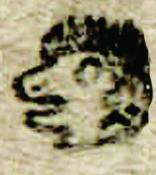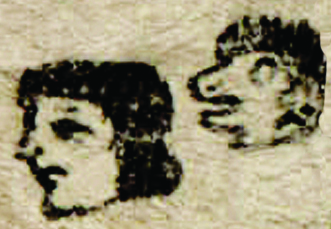Ozoma (BMapH41)
This black-line drawing of the simplex glyph for the personal name Ozoma (“Monkey) shows the head of a monkey (ozomatli) in profile, facing toward the left, the head of the man whose name this is. The monkey’s head has a large wide-open eye, a dot for a nostril, an open mouth, and thick black hair standing straight up on the top of its head.
Stephanie Wood
Ozomatli is a day name in the 260-day religious divinatory calendar, the tonalpohualli.
Stephanie Wood
This glyph is not glossed; the transliteration of the glyph comes from Gordon Whittaker’s contribution to the study by Mary E. Miller and Barbara E. Mundy (2012).
c. 1565
Jeff Haskett-Wood
monos, nombres de días, nombres de hombres

ozoma(tli), a monkey, https://nahuatl.wired-humanities.org/content/ozomatli
Mono
Stephanie Wood
Beinecke Map/Codex Reese, section 8, no. 41 in the Whittaker study (published in the Miller/Mundy book, 2012), and see the original at: https://brbl-dl.library.yale.edu/vufind/Record/3600017
The Bodleian Libraries, University of Oxford, hold the original manuscript, the MS. Arch. Selden. A. 1. This image is published here under the UK Creative Commons, “Attribution-NonCommercial-ShareAlike 3.0 License” (CC-BY-NC-SA 3.0).






